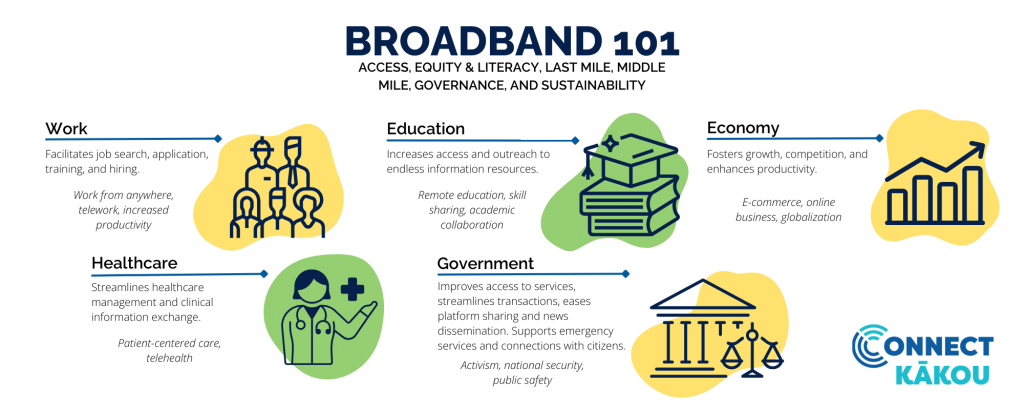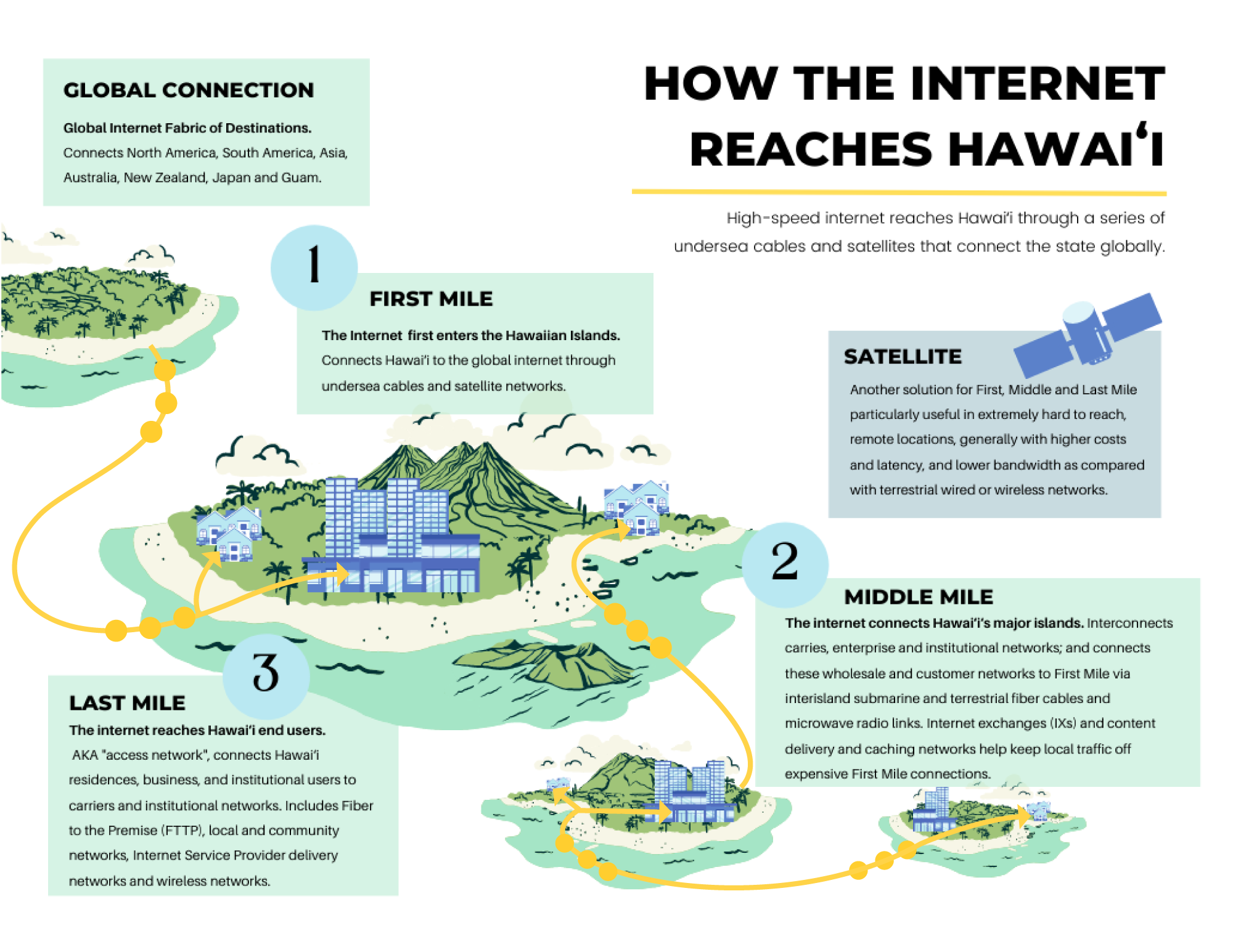
What is broadband?
“Broadband” is short-hand for an “always-on,” high-speed internet connection provided by a company or other entity known as an “internet service provider” (ISP). A high-speed home internet connection is no longer a luxury; it is a necessity. This is particularly the case as more and more services—from government forms and documents, to homework, and commerce—gravitate to online only. Work, education, economy, healthcare, and government all benefit from access to broadband, which has been a key player in transforming these sectors into their most modern form. Remote work and education, telehealth, national security, and globalization, among many others, can all excel today because of the advancements stemming from broadband adoption. For Hawaiʻi citizens living in rural communities who might be separated from major cities, broadband can mean leveling the economic and academic playing fields. It allows people to telecommute/telework, allows for telemedicine, and allows all students to have reliable access to the internet in their schools and at home.
Hawai‘i’s Unique Challenges to Achieve Broadband Goals
Click the link to view an interactive Google Earth experience to learn more about how the Internet reaches Hawaiʻi. Learn more
Hawai‘i faces unique connectivity challenges, unlike any other state in the US, because of its unique geographical location as a state over 2000 miles away from any other major land mass. Other states have access to miles of interconnected terrestrial fiber paths within the continental US. Hawai‘i relies on submarine fiber to provide connectivity from the rest of the world to the Islands, with terrestrial and interisland submarine fiber reinforcing the local delivery of broadband. Broadband connectivity is provisioned as three interconnected segments: First Mile, Middle Mile, and Last Mile. The First Mile segment connects Hawai‘i to the global internet via submarine optical fiber cables that terminate in cable landing stations at various points throughout the islands. The Middle Mile segment provides connectivity between islands with both submarine and terrestrial optical fiber and connects these networks to major internet exchanges and service providers on all islands. It includes all broadband infrastructure (e.g., backhaul, cable landing stations, undersea cables, etc.) that do not connect directly to an end user. The Last Mile segment provides connectivity to homes, libraries, schools, and businesses and is the final stretch for broadband from an Internet Service Provider (ISP) to an end user.
For Hawai‘i, this first mile and middle mile segment does not resemble any other model in the continental United States. Connectivity deficiencies are not unique to any one of the major islands and are at an increased risk with the existing, aged interisland fiber systems nearing the end of their service life (around 25 years) within the next decade. As a result, Hawai‘i’s strategy largely focuses on the importance of developing the state’s existing middle mile infrastructure and future middle mile infrastructure with today’s available funding in order to create a robust, future-proof broadband landscape that can support ongoing and future last-mile buildouts. This includes the addition of new carrier-neutral cable landing stations—the first in Hawai‘i—to enhance the competitive landscape and attract new transpacific submarine fiber build outs to the State, along with a new interisland fiber ring sufficient enough to support Hawaiʻi through 2050.

Continuous improvements to Hawai‘i’s broadband landscape, primarily in last mile deployment and affordable access, will allow Hawai‘i residents, businesses, government agencies, and other organizations to make use of the online services available to them.
The key to achieving this last mile vision relies on the reality that the last mile does not just exist on its own functional grid. Whether through submarine fiber or terrestrial fiber, last mile is ineffective without the reliable, “hidden” middle mile infrastructure through which all primary fixed wireline and wireless transmissions travel through. Most important to citizens is the last mile segment; however, this connectivity cannot be sustained without improvements to the first and middle mile segments that carry fiber broadband connectivity to and throughout the State.
